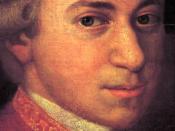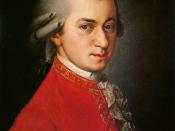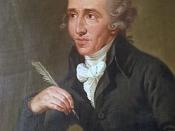Giovanni Sammartini, son of a French oboist, was born in Milan, Italy in 1700. He received musical instruction from his father and ended up writing his first work in 1725, which consisted of a set of vocal works. A few years later and already famous, he acquired the position of maestro di cappella to the Congregation of the St. Entierro. As a composer and conductor, he contributed towards the founding of a modern style of instrumental music, but was also ItalyÃÂs most important symphonist during his musical career (Karadar Classical Music).
In the 1730ÃÂs, Sammartini became famous as a church composer. He joined several churches and ended up writing music that was to be performed at state occasions, and also in houses of nobility. This allowed him the opportunity to come into contact with other composers such as: Mozart, Johann Christian Bach, Joseph Haydn, and Gluck whom later became a student of his.
SammartiniÃÂs music is divided into three stylistic periods. The early period (1724-1739), which reflects both a mixture of Baroque and Preclassical forms. Then there is the middle period (1740-1758), which suggests Preclassical form and adds tow horns to the ensemble. It is regarded as his most significant period during which his compositions in the gallant style of music foreshadow the Classical era to come. Finally, there is the late period (1759-1774). The late period displays Classical influences like Mozart. The symphonies are longer and include more wind instruments (The WorldÃÂs Leading Classical Label).
I believe that Giovanni Sammartini was both an innovator and cultivator, especially when it came to the development of the symphony. Though he did not invent the form, he was the first composer to master it. His symphonies were driven by rhythm and a clearer form, particularly early sonata and rounded binary forms.


